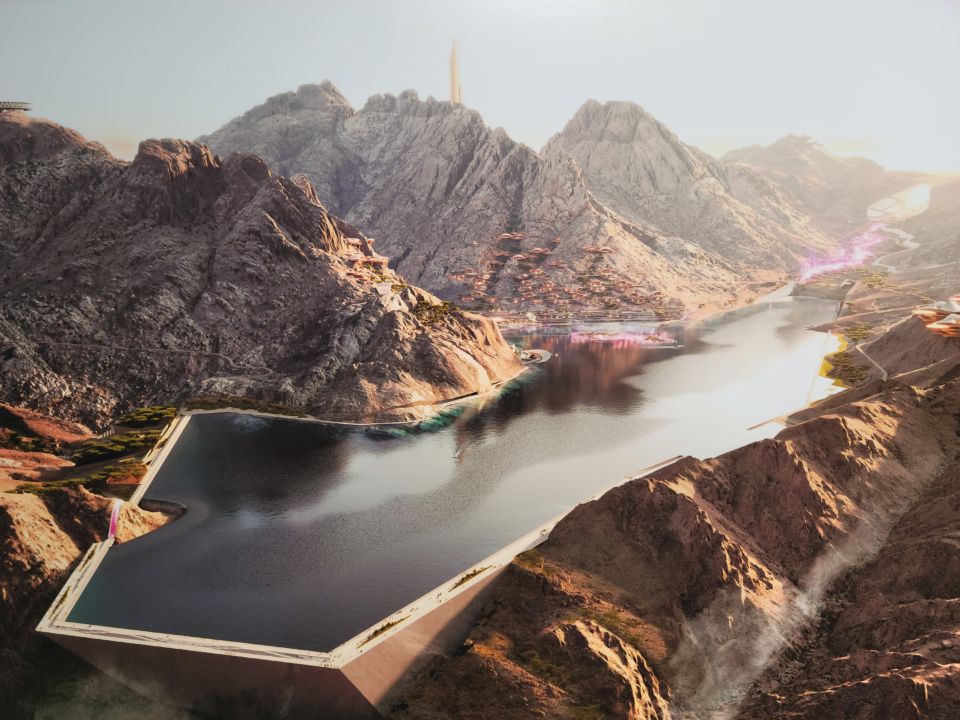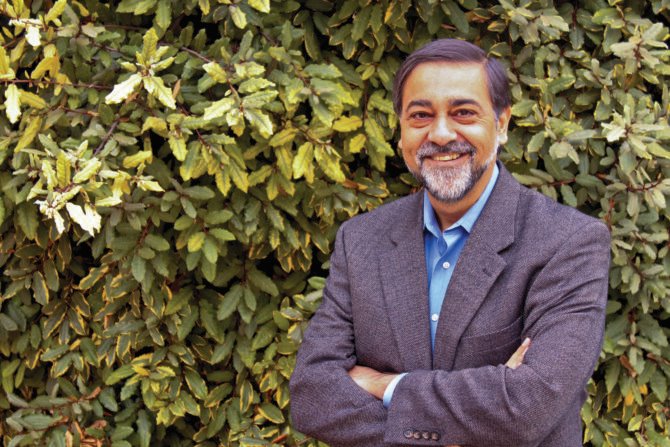Organizational leaders have the opportunity – and responsibility – to act in the interests of the planet and humanity as a whole.
The alarm bells about the climate crisis have been ringing for decades, but the warnings have been largely ignored. It’s no longer possible to bury our heads in the sand. We are seeing the impacts of the climate crisis play out on our screens in real time, to deadly effect.
While the effects of human activities on Earth’s climate are irreversible, there is still a firm belief among experts that we can find the solutions needed in this fight against climate change. The work of change is happening. I believe the commitment of the not-for-profit sector has filtered into the world of business. Many corporate leaders around the world are striving to do better. But we need the pace to be faster.
There are hundreds of organizations around the world that are working collaboratively and inclusively to find long-lasting solutions to the climate crisis. We can find some great examples from across the charity and business sectors. One is Climate Action Network International, a global network of more than 1,300 environmental not-for-profit organizations with regional hubs in West Africa, South Asia, Latin America and Eastern Europe. The hubs promote governmental and individual action to address the impacts of climate change and have working groups to tackle issues from agriculture to science policy, and technology.
Alphabet, the parent company of Google, has become an industry leader for environmental sustainability, becoming carbon neutral in 2007. It is the first company of its size to match its total electricity consumption with renewable energy. There’s Patagonia, the famous outdoor clothing brand, known for its pro-planet initiatives. It is part of a global network of firms committed to inspiring collective action and stopping greenwashing, which is when companies pretend that they have authentic sustainable businesses practices, but don’t. It partners with grassroot organizations to restore lands, air and waters. Patagonia works hard to address the connections between environmental destruction and social justice.
Such case studies and examples are useful, but we all still need to be inspired.
Find a spark
Climate action needs strong fearless leadership. In my latest book, What Will Your Legacy Be?, I talk to 36 global changemakers from across science, communities, business, media, food, music and art, and other sectors. They are all brave and bold voices, finding solutions to the climate crisis. Their reflections on the problems we face, and on what motivates them to fight for change, are deeply inspirational.
One of those voices belongs to Ingmar Rentzhog, a Swedish entrepreneur and climate champion. Rentzhog is the cofounder and chief executive of We Don’t Have Time, a social network fighting the climate crisis. He discovered and gave visibility to Greta Thunberg, from her lonely protest in front of the Swedish Parliament to her first speech at the UN.
I asked Rentzhog what led him to set up We Don’t Have Time, and he revealed that he was inspired by two life events. One dark morning in November 2016, Rentzhog was stuck at home in Stockholm, as the whole city had been shut down due to extreme weather. Watching the news, he had an epiphany. Donald Trump had been announced as the next US president. Says Rentzhog: “It hit me hard, because I realized that Trump was the only global leader telling the truth.” The TV-star-turned-President told everyone that “he didn’t care about the future, or anything, whereas other world leaders were pretending they were doing things, but they were not really doing anything.” It was in that moment that Ingmar decided to act.
Finding a personal spark is key to igniting the momentum to make a difference – as is holding fast to that spark and nurturing its flame through the tough moments that define an effort to drive transformative change.
Bring in the next generation
One of the most powerful moves that companies can make to energize their efforts on environmental impact was highlighted to me when I spoke to Jacob Dahl, a senior partner emeritus at McKinsey & Company. Dahl told me that companies need to bring the voice of future generations to the negotiating table in the climate crisis decision-making. This is already happening in certain cities in Japan, where specific new roles with the title of commissioner have been created, sitting just below ministerial level. These commissioners have responsibility for taking care of the Japanese generation of 2060 – that is, those who will be born 25 years from now. When such commissioners sit in policy meetings, they put the voice of that generation into the decision being made, whether it is about infrastructure, renewables, schooling, healthcare – any kind of decision. The commissioner is the voice of the future generation, which is so important for helping people think about the long term.
It is a tactic that could be used by businesses. Enhanced roles for Generations Y and Z in developing sustainability strategies and executing on delivery plans could help organizations act with the long term in mind.
Prepare for legal changes
Inspiration and a long term outlook are important for building motivation too – but leaders also need to recognize the likelihood that the law will increasingly be used to reinforce new and more environmentally-friendly norms as society grapples with climate change impacts.
For years, a growing global movement has been working to define the crime of ecocide: unlawful or willful acts that are committed with knowledge, which cause severe and long-term damage to the environment. The campaign aims to establish this as a concept in international law – building on its adoption at a national level, as in Belgium. To make the case, advocates point to the most severe forms of environmental damage, such as oil or chemical spills, or the clear-cutting of primary rainforests. These acts have a devastating impact on natural ecosystems, communities and businesses alike. There is a domino effect at play: as the climate worsens and extreme events become more common, businesses face disrupted operations and increasing costs, which subsequently weakens our economies.
While most individuals and companies claim not to intentionally harm nature, too often, they remain knowingly ignorant of the environmental damage they cause, a behavior enabled by weak regulatory frameworks that offer limited ways for protection.
Jojo Mehta is chief executive of Stop Ecocide International, having cofounded the organization in 2017 with the late Polly Higgins. The group is behind the growing movement to make ecocide a crime. Mehta argues it’s crucial for there to be individual responsibility for environmental crimes. “I think this is very important, because ultimately, it is people who make decisions. While it may be a board of people, it’s still people. A board of directors will have a very different approach to its environmental obligations if they know that they could be in breach of law and may be at risk of committing ecocide.” Knowing that they faced consequences as individuals could be a sobering thought for company CEOs and board members. “Such a law could give them a tap on the shoulder to let them know their freedom and reputation are at stake,” says Mehta.
Ecocide law could provide a new global framework where companies are supported in their moves toward sustainability. It could accelerate green innovation, redirect finance and investment away from the most harmful practices, and help meaningfully bridge the gap between environmental protection and economic development.
Ready for change?
There are still many organizations and businesses who don’t know where to start or how to make a genuine difference. For some the challenges seem far too complex. Yet there are easy things to do – and importantly, there is still time to act. Here are four suggestions.
1. Measure your carbon footprint This is the first step in combating climate change. Understanding the impact of your organization’s operations on the environment is crucial. All business activities, from production to transportation, generate greenhouse gas emissions, which contribute to your business’s overall carbon footprint.
Takeaway Begin with a comprehensive carbon audit to identify the areas responsible for the highest emissions, and implement strategies to reduce these.
2. Create sustainable and green supply chains Supply chains and partnerships play an important role in reducing your organizational carbon footprint. Eco-friendly materials in production processes minimize pollution and conserve natural resources. Building green supply chains can lead to substantial cost savings for your business too; using energy-efficient machinery and renewable energy sources can reduce costs, while minimizing waste lowers expenditure on raw materials and disposal fees.
Takeaway Work with suppliers who adopt sustainable practices. Source products and materials that are environmentally friendly. Sustainable supply chains help minimize waste, reduce carbon emissions, and encourage ethical labor practices. Developing green practices often reveals inefficiencies in traditional operations, offering opportunities to streamline processes and reduce overheads.
3. Adopt renewable energy Renewable energy sources, such as solar and wind power, provide a cleaner alternative to fossil fuels and reduce carbon emissions. They have fewer harmful environmental impacts than traditional energy and can help combat the effects of climate change. Transitioning to clean energy protects the fundamental human right to a healthy, safe environment.
Takeaway Think about installing solar panels, investing in wind energy, or switching to green energy suppliers to decrease reliance on non-renewable resources.
4. Promote sustainable practices among employees Implementing positive sustainable practices at work can help employees feel a greater sense of purpose and pride in their work, which can lead to higher job satisfaction and retention. It also attracts talent, especially among Millennials.
Takeaway Encourage employees to use public transport, cycle, or help to create a carpool to work. Provide training on environmental awareness and sustainability, promoting an organizational culture that values and respects the environment. Start lunchtime learning sessions about good green practices.
Your climate legacy
As business leaders, the most powerful things we can do lie in the organizations we run. It starts with thinking and acting differently, creating moments where we become transformative. It means treating carbon emissions as costly, not cost-free; investing in climate solutions; and assessing and reducing our vulnerability to climate-related environmental and economic shocks.
By becoming climate-conscious and active, you are building a resilient business for the future. That is not only part of your business legacy, but your company’s climate legacy. What do you want to be remembered for?




